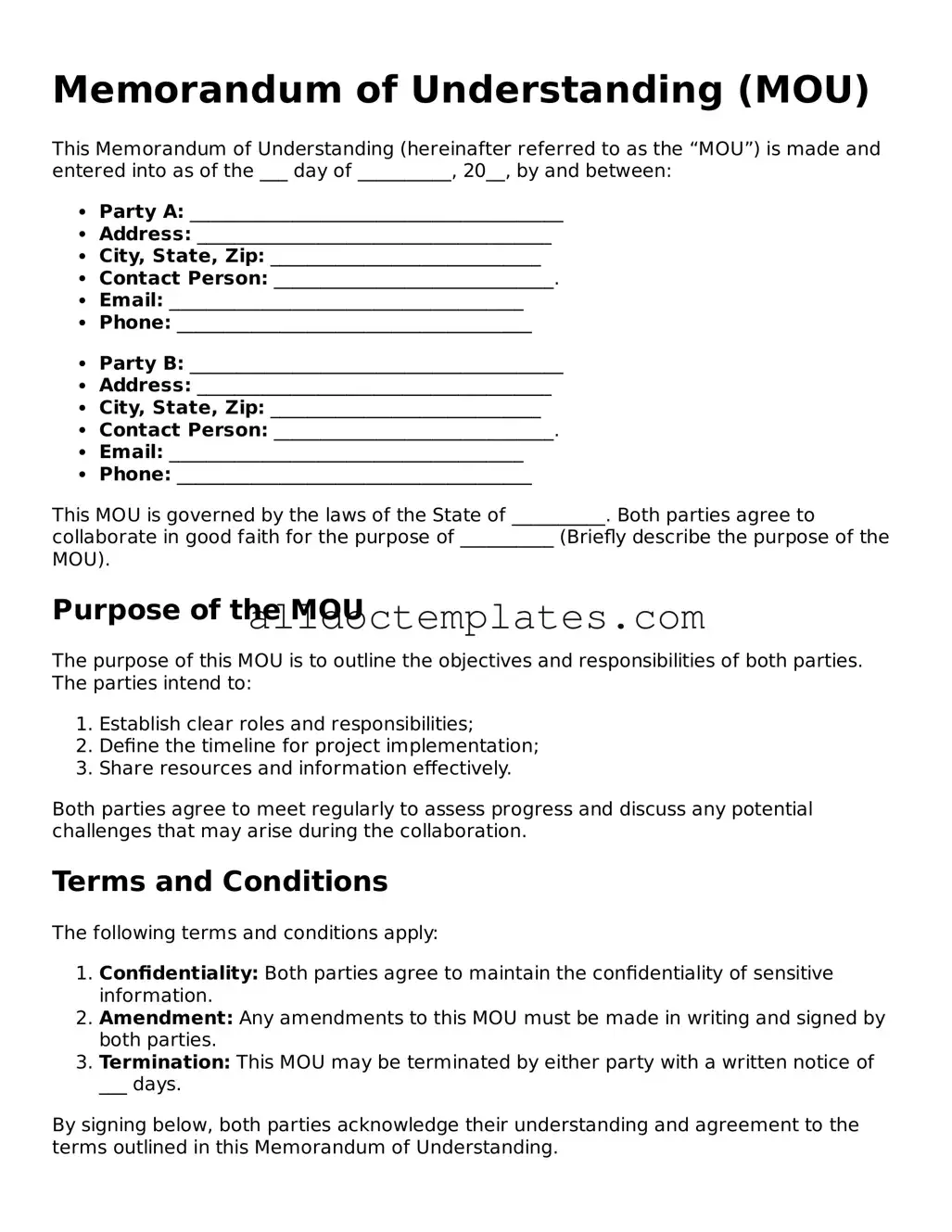Memorandum of Understanding (MOU)
This Memorandum of Understanding (hereinafter referred to as the “MOU”) is made and entered into as of the ___ day of __________, 20__, by and between:
- Party A: ________________________________________
- Address: ______________________________________
- City, State, Zip: _____________________________
- Contact Person: ______________________________.
- Email: ______________________________________
- Phone: ______________________________________
- Party B: ________________________________________
- Address: ______________________________________
- City, State, Zip: _____________________________
- Contact Person: ______________________________.
- Email: ______________________________________
- Phone: ______________________________________
This MOU is governed by the laws of the State of __________. Both parties agree to collaborate in good faith for the purpose of __________ (Briefly describe the purpose of the MOU).
Purpose of the MOU
The purpose of this MOU is to outline the objectives and responsibilities of both parties. The parties intend to:
- Establish clear roles and responsibilities;
- Define the timeline for project implementation;
- Share resources and information effectively.
Both parties agree to meet regularly to assess progress and discuss any potential challenges that may arise during the collaboration.
Terms and Conditions
The following terms and conditions apply:
- Confidentiality: Both parties agree to maintain the confidentiality of sensitive information.
- Amendment: Any amendments to this MOU must be made in writing and signed by both parties.
- Termination: This MOU may be terminated by either party with a written notice of ___ days.
By signing below, both parties acknowledge their understanding and agreement to the terms outlined in this Memorandum of Understanding.
Signatures
Party A:
_____________________________
Name: ______________________
Title: ______________________
Date: ______________________
Party B:
_____________________________
Name: ______________________
Title: ______________________
Date: ______________________
